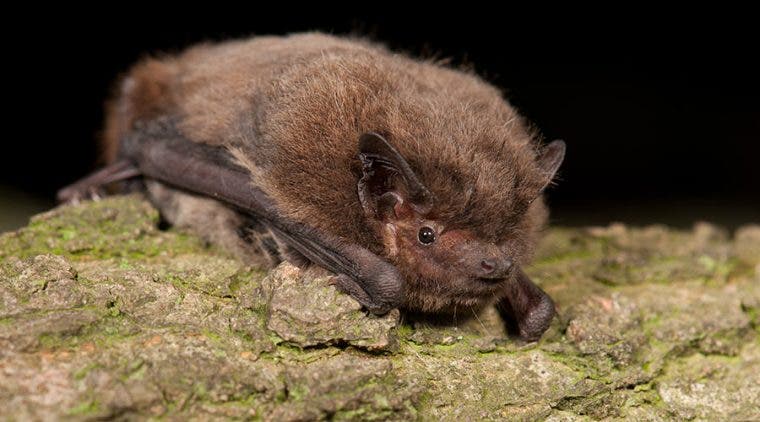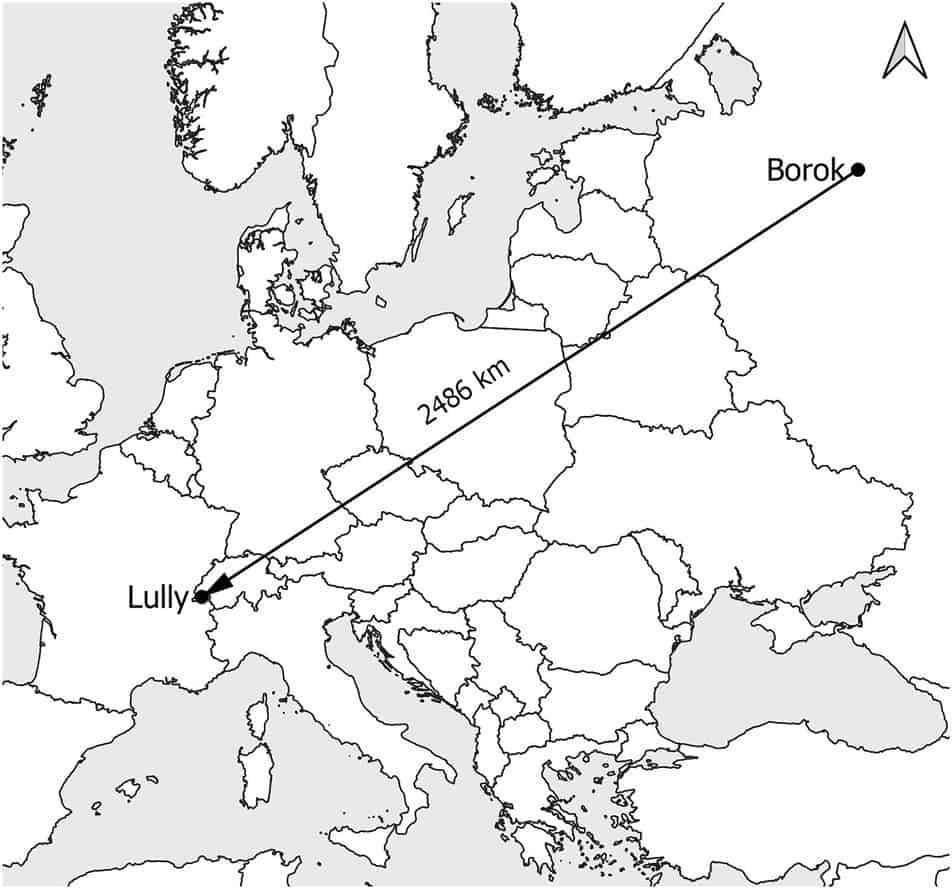
You wouldn’t think that a tiny bat that weighs slightly more than a nickel is one of the world’s most formidable endurance fliers, but appearances can be deceiving. According to researchers, a female Nathusius’ pipistrelle bat flew more than 1,500 miles (2,400 kilometers) from a nature reserve in Russia, relatively close to Moscow, all the way to a village in the French Alps. This is the longest distance a bat has ever been recorded traveling, though scientists suspect such migrations may actually be routine for this species.
The Nathusius’ pipistrelle bat is native to Europe, from Russia to Spain and from the British Isles to Sicily, and is easily recognizable by its reddish-brown fur and small size. These bats generally spend their summers breeding and raising offspring in northeastern Europe before migrating southwest to warmer plains, where they like to hibernate for the winter.
Since they live aboveground, such as inside buildings or trees, Nathusius’ pipistrelle bats require warmer climates than their cave-dwelling counterparts. Sometimes, this means traveling over vast distances.
In 2017, researchers tracked an individual from the same species that flew 1,380 miles (2,220 kilometers) from Latvia to Spain. Now, in a new study published in the journal Mammalia, researchers have shown that these crafty bats can fly much longer to find a place to hibernate.
The discovery was made by accident, when Jean-François Desmet, an animal ecologist at the independent Group of Research and Information on the Fauna in the Mountain Ecosystems (G.R.I.F.E.M) in France, first found a dead bat in a village close to the French Alps in the fall of 2009. Upon inspecting the bat, the French researcher was stunned to find an aluminum leg band with the word “RUSSIA” stamped on it, along with a serial number.
It took years, however, before Desmet could track down the people who tagged the bat. Eventually, Desmet came in contact with Denis Vasenkov, a scientist with the Russian Academy of Sciences who first tagged the bat all the way in Russia’s Darwin Nature Biosphere Reserve.
Although there was no GPS, the researchers reckon the bat must have traveled 1,500 miles (2,400 kilometers), stopping along the way to forage insects and rest. However, the journey must have been much longer than the straight line drawn between the original tagging location and the site in the French Alps where the bat was found, perhaps as much as 1,900 miles (3,000 kilometers).

Other bats may have flown even farther still. If Nathusius’ pipistrelles reach Spain from the Baltic countries or even Russia, this new record may not last long — especially considering the effects of climate change.
“We do not know why the yearling female P. nathusii used such a long and seemingly “suboptimal” migrating route. Perhaps this is a deviation from the common migration routes of this species, or perhaps it is more common than we might think. It is possible that bats migrate over almost the entire range. The range of Nathusius’ pipistrelle reaches the Urals in the eas, and it turns out that in this case bats can migrate over most of Europe,” the researchers wrote in their study.


